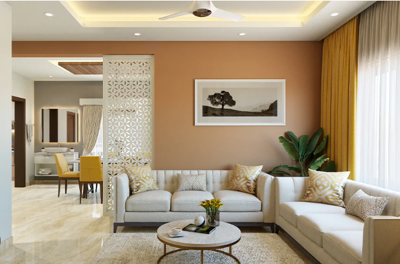
In a world increasingly aware of environmental concerns, sustainable home design has taken center stage. As homeowners and architects strive to create spaces that harmonize with nature, sustainable design principles not only enhance aesthetic appeal but also contribute to a healthier planet. This article explores key elements of sustainable home design, providing insights into creating a thriving, eco-friendly living environment.
1. Energy Efficiency
One of the main focuses of sustainable home design is energy efficiency. This involves selecting materials, appliances, and technologies that minimize energy consumption. For instance, energy-efficient windows and insulation materials can significantly reduce heating and cooling costs. Incorporating solar panels not only lowers electricity bills but also harnesses renewable energy, making homes less reliant on fossil fuel sources.
2. Sustainable Materials
When designing or renovating a home, the choice of materials plays a crucial role. Opting for sustainable, locally sourced, and recycled materials not only reduces the carbon footprint but also supports local economies. Bamboo flooring, reclaimed wood, and natural stone are excellent choices that add character while being environmentally friendly. Additionally, using low-VOC (volatile organic compound) paints and finishes improves indoor air quality, benefiting the health of residents.
3. Water Conservation
Water scarcity is a pressing issue in many regions, making water conservation essential in sustainable home design. Implementing systems such as rainwater harvesting and greywater recycling can significantly reduce water usage. Low-flow fixtures, such as faucets and toilets, are also effective in minimizing water waste, ensuring that homes remain comfortable without demanding excessive resources.
4. Indoor-Outdoor Connection
Creating a seamless transition between indoor and outdoor spaces enhances the living experience while promoting sustainability. Designing homes with large windows, sliding glass doors, and outdoor living areas encourages natural light and ventilation, reducing the need for artificial lighting and climate control. Landscaping with native plants not only requires less water but also supports local biodiversity, attracting beneficial wildlife.
5. Smart Home Technology
Integrating smart home technology can further enhance the sustainability of a home. Smart thermostats, lighting systems, and energy monitoring devices allow homeowners to optimize energy consumption and reduce waste. Automated systems can learn occupants' habits, adjusting heating, cooling, and lighting accordingly, ensuring comfort while conserving resources.
6. Flexible Spaces
As lifestyles evolve, having adaptable spaces in a home becomes increasingly important. Designing flexible rooms that can serve multiple functions—such as a home office that doubles as a guest room—maximizes usability without the need for additional square footage. This approach not only makes homes more efficient but also reduces the environmental impact associated with new construction.
Sustainable home design is about more than just aesthetics; it's a commitment to creating healthy, efficient living environments that respect and preserve our planet. By incorporating energy-efficient technologies, sustainable materials, and innovative design strategies, homeowners can lead the way toward a greener future. As we embrace these practices, we not only enhance our quality of life but also ensure that future generations inherit a world worth living in. Whether building from scratch or renovating an existing space, taking steps toward sustainability is a rewarding endeavor that pays dividends both personally and environmentally.



(0) comments
Welcome to the discussion.
Log In
Keep it Clean. Please avoid obscene, vulgar, lewd, racist or sexually-oriented language.
PLEASE TURN OFF YOUR CAPS LOCK.
Don't Threaten. Threats of harming another person will not be tolerated.
Be Truthful. Don't knowingly lie about anyone or anything.
Be Nice. No racism, sexism or any sort of -ism that is degrading to another person.
Be Proactive. Use the 'Report' link on each comment to let us know of abusive posts.
Share with Us. We'd love to hear eyewitness accounts, the history behind an article.